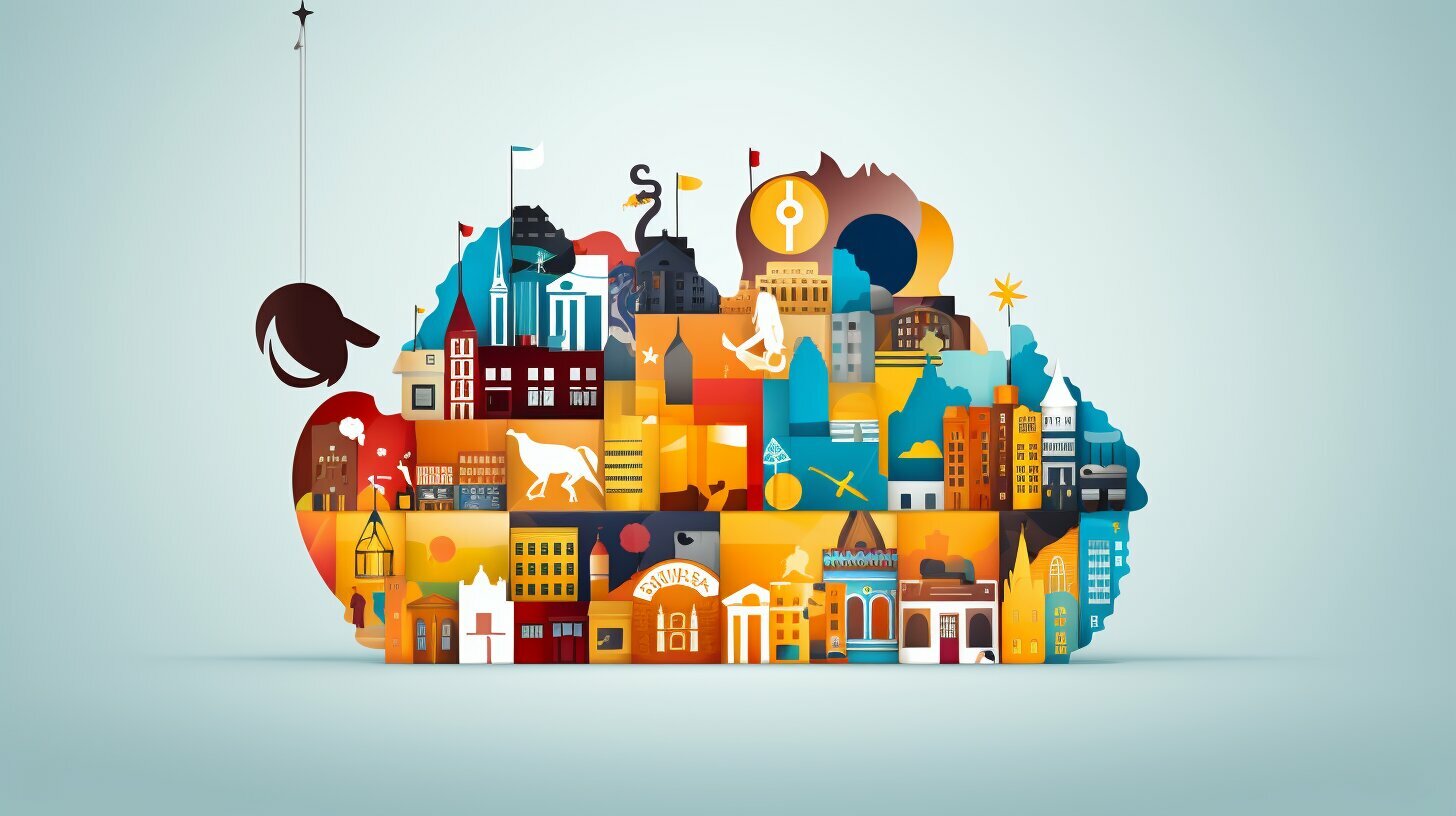What country is NL?
The Netherlands, often referred to as NL, is a country located in northwestern Europe. NL is the country code and abbreviation for the Netherlands. It consists of twelve provinces and shares borders with Germany and Belgium. The official language is Dutch, and the country has a parliamentary constitutional monarchy. The Netherlands is known for its cultural and economic influence during the Dutch Golden Age and is a member of various international organizations. The capital of the Netherlands is Amsterdam, and it has a population of 17.9 million people.
Key Takeaways:
- The Netherlands, also known as NL, is a country located in northwestern Europe.
- NL is the country code and abbreviation for the Netherlands.
- The Netherlands consists of twelve provinces and shares borders with Germany and Belgium.
- The official language of the Netherlands is Dutch, and it has a parliamentary constitutional monarchy.
- The Netherlands has a rich cultural and economic history, particularly during the Dutch Golden Age.
The Netherlands – A Country in Northwestern Europe
The Netherlands, officially known as the Kingdom of the Netherlands, is a country situated in northwestern Europe. It is bordered by Germany to the east and Belgium to the south. With a population of 17.9 million people, the Netherlands is known for its rich history, cultural heritage, and economic influence.
The Netherlands consists of twelve provinces, each with its own unique characteristics and landscapes. From the famous tulip fields to the picturesque windmills, the country offers a diverse range of natural beauty. Additionally, the Netherlands has a well-developed infrastructure, including an extensive network of canals and the world-renowned Dutch cycling culture.
As a member of various international organizations, the Netherlands plays a significant role in global affairs. It is recognized for its commitment to sustainable development, innovation, and human rights. The country has a parliamentary constitutional monarchy, with King Willem-Alexander serving as the current monarch.
The Dutch Golden Age: A Period of Cultural and Economic Prosperity
During the Dutch Golden Age in the 17th century, the Netherlands experienced a period of immense cultural and economic prosperity. It was a time of flourishing trade, artistic achievements, and scientific advancements. Prominent figures such as Rembrandt van Rijn and Johannes Vermeer emerged, leaving a lasting impact on the art world.
The Dutch East India Company, established in 1602, played a pivotal role in expanding trade and establishing the Netherlands as a global economic power. Amsterdam, the capital city, became a hub for international commerce, attracting merchants and traders from around the world.
In conclusion, the Netherlands is a country with a rich history, vibrant culture, and significant global influence. From its picturesque landscapes to its contributions to art and commerce, the Netherlands is a nation that continues to capture the imagination of people worldwide.
| Key Information about the Netherlands | |
|---|---|
| Official Name | Kingdom of the Netherlands |
| Location | Northwestern Europe |
| Capital | Amsterdam |
| Provinces | 12 |
| Population | 17.9 million |
| Official Language | Dutch |
| Government | Parliamentary Constitutional Monarchy |
| Significant Period | Dutch Golden Age (17th century) |
NL – Country Code and Abbreviation
NL is the country code and abbreviation for the Netherlands. Situated in northwestern Europe, the Netherlands is known for its picturesque landscapes and vibrant culture. With a rich history and influential contributions, NL holds a significant place on the global stage.
Geographical and Political Features of the Netherlands
The Netherlands consists of twelve provinces and shares borders with Germany and Belgium. Its strategic location has played a crucial role in shaping its political and economic landscape. As a parliamentary constitutional monarchy, the country embraces a democratic system with a constitutional monarch as the head of state.
Cultural and Economic Influence of the Netherlands
Throughout history, the Netherlands has been a hub of cultural and economic influence. During the Dutch Golden Age, it emerged as a global power, making significant advancements in art, science, and trade. Its maritime prowess and innovative spirit contributed to its remarkable economic growth and international prominence.
| Fact | Detail |
|---|---|
| Official Language | Dutch |
| Population | 17.9 million people |
| Capital | Amsterdam |
| Membership | The Netherlands is a member of various international organizations, fostering collaboration and diplomacy on a global scale. |
The Netherlands, with its diverse landscapes, cultural heritage, and entrepreneurial spirit, continues to be a beacon of innovation and progress. From its country code NL to its rich history, it leaves an indelible mark on the world stage.
Geographical and Political Features of the Netherlands
The Netherlands consists of twelve provinces and shares borders with Germany and Belgium. Situated in northwestern Europe, this country is known for its rich history and diverse landscapes. From picturesque windmills and tulip fields to vibrant cities and picturesque canals, the Netherlands offers a unique blend of natural beauty and urban charm.
With its strategic location, the Netherlands has played a significant role in European politics and trade. As a parliamentary constitutional monarchy, the country is governed by a King or Queen who acts as the head of state, while the day-to-day affairs are managed by the Prime Minister and the government.
The Netherlands is recognized for its progressive policies and commitment to sustainability. It is a founding member of the European Union (EU) and a member of the North Atlantic Treaty Organization (NATO), United Nations (UN), and the World Trade Organization (WTO). This global engagement reflects the country’s influence and contribution to international affairs.
| Capital | Population | Official Language |
|---|---|---|
| Amsterdam | 17.9 million | Dutch |
The Netherlands is a country of innovation and creativity, known for its advancements in technology, arts, and sciences. It boasts a thriving cultural scene, encompassing renowned museums, music festivals, and vibrant street art. The Dutch Golden Age, a period of unprecedented economic growth and cultural flourishing in the 17th century, has left a lasting impact on the country’s identity and global influence.
Summary
- The Netherlands consists of twelve provinces and shares borders with Germany and Belgium.
- It is a parliamentary constitutional monarchy with a progressive approach to governance.
- The country is a member of various international organizations, including the EU, NATO, UN, and WTO.
- Amsterdam is the capital, and the official language is Dutch.
- The Netherlands has a rich cultural heritage and is known for its contributions to arts, sciences, and technology.
Note: The data provided is accurate as of the time of writing and may be subject to change.
Cultural and Economic Influence of the Netherlands
The Netherlands, known for its cultural and economic influence, made significant contributions during the Dutch Golden Age. This period, spanning the 17th century, marked a flourishing era for Dutch art, science, trade, and exploration. The country’s innovative spirit and entrepreneurial mindset propelled it to the forefront of global affairs.
During the Dutch Golden Age, the Netherlands became a hub of artistic brilliance. Renowned painters such as Rembrandt and Vermeer emerged, leaving behind a rich legacy of masterpieces that continue to captivate audiences worldwide. The Dutch also excelled in cartography, pushing the boundaries of exploration and expanding their trade networks.
Amsterdam, in particular, played a central role as a global trading hub during this period. The city’s strategic location and bustling port made it an ideal hub for international commerce. Dutch merchants established the Dutch East India Company (VOC), which grew to become the world’s first multinational corporation. Through their ventures, they brought trade, wealth, and cultural exchange to the Netherlands.
Influence on Global Trade
The Dutch Golden Age saw the Netherlands emerge as a dominant force in global trade. Dutch merchants were pioneers in the fields of banking, finance, and insurance, laying the foundation for modern economic systems. The establishment of stock exchanges in Amsterdam and other Dutch cities marked significant milestones in the development of world financial markets.
The Netherlands’ influence extended beyond economic matters. The country’s tolerant and progressive society attracted scholars, philosophers, and intellectuals from around the world. In Amsterdam, the University of Amsterdam and other academic institutions flourished, fostering an environment of intellectual curiosity and innovation.
In conclusion, the Netherlands’ cultural and economic influence during the Dutch Golden Age left an indelible mark on world history. Through their achievements in art, exploration, trade, and academia, the Dutch established themselves as pioneers and visionaries. Today, the Netherlands continues to be a thriving nation, upholding its rich cultural heritage and contributing to the global stage.
| Dutch Golden Age Contributions | Impact |
|---|---|
| Artistic Brilliance | Inspired generations of artists and shaped the art world |
| Advancements in Trade | Pioneered modern economic systems and established global trading networks |
| Scholarly Pursuits | Attracted intellectuals and fostered academic excellence |
Amsterdam, Capital of the Netherlands
Amsterdam, the capital of the Netherlands and designated NL country code, is a vibrant city with rich cultural heritage. Known for its picturesque canals, historic buildings, and world-renowned museums, Amsterdam attracts millions of tourists each year.
The city’s charm lies in its unique blend of old-world charm and modern innovation. Visitors can explore the iconic Anne Frank House, where Anne Frank and her family hid during World War II, or take a leisurely stroll through the beautiful Vondelpark, Amsterdam’s largest park.
Amsterdam is also a hub for art enthusiasts, boasting an impressive collection of masterpieces at the Rijksmuseum and the Van Gogh Museum. The city’s vibrant art scene extends beyond museums, with numerous galleries and street art adorning the city’s walls.
Aside from its cultural offerings, Amsterdam is a dynamic economic center. The city is home to several multinational companies and has a thriving startup culture. With its picturesque canals and bustling markets, Amsterdam offers a unique and inspiring backdrop for both business and leisure.
FAQ
Q: What country is NL?
A: NL refers to the Netherlands, a country located in northwestern Europe with overseas territories in the Caribbean.
Q: What is the official language of the Netherlands?
A: The official language of the Netherlands is Dutch.
Q: How many provinces does the Netherlands have?
A: The Netherlands consists of twelve provinces.
Q: Which countries border the Netherlands?
A: The Netherlands shares borders with Germany and Belgium.
Q: What type of government does the Netherlands have?
A: The Netherlands has a parliamentary constitutional monarchy.
Q: What is the capital of the Netherlands?
A: The capital of the Netherlands is Amsterdam.
Q: How large is the population of the Netherlands?
A: The Netherlands has a population of 17.9 million people.



